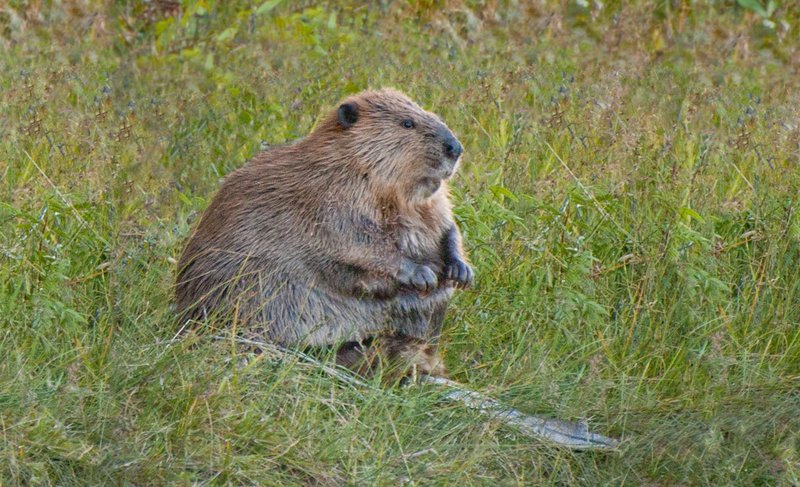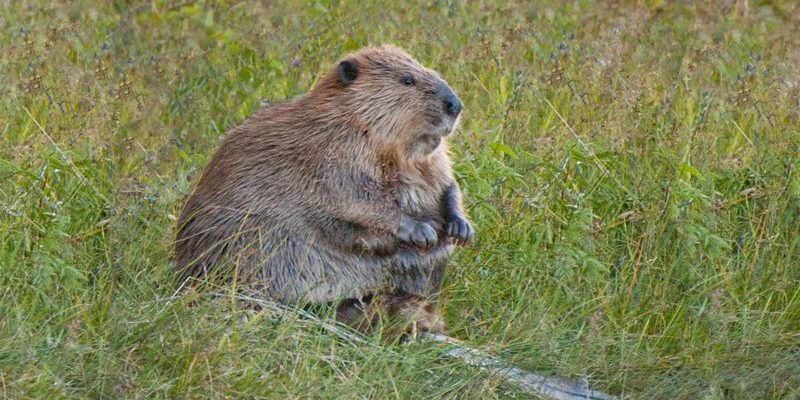
The North American Beaver is a fascinating creature, and honestly, it’s kind of like nature’s very own architect. With their strong teeth and impressive paws, they build homes that not only impress us but also transform entire ecosystems. Imagine wandering through a quiet forest and suddenly stumbling upon a bustling beaver pond, complete with a lodge made from fallen branches and mud. That magical scene is just a glimpse into the life of these industrious animals.
You might be wondering what makes beavers so special, or how they impact their surroundings. Well, these little engineers play a vital role in their habitats, helping support a diverse array of wildlife. They’re not just cute; they’re essential for maintaining the balance in aquatic ecosystems. So, let’s dive a little deeper into the world of the North American Beaver and unravel the secrets of their lives.
Physical Characteristics
Understanding the physical characteristics of the North American Beaver can help us appreciate just how unique they are. Adult beavers usually weigh between 40 to 60 pounds, which is quite a lot for a rodent! Their bodies are compact, with short legs and a robust frame. One of their most iconic features is their flat, paddle-shaped tail, which measures up to 12 inches long. This tail isn’t just for show; it helps them balance while they’re swimming and can even serve as a warning signal to others nearby when they slap it on the water’s surface.
Beavers are covered in thick, waterproof fur, which keeps them warm and dry when they dive into chilly streams or ponds. Their fur’s color can vary from dark brown to reddish shades, blending them perfectly into their natural surroundings. Plus, their large, sharp front teeth are designed for gnawing through wood. These teeth never stop growing, which means they need to chew on trees and shrubs regularly to keep them worn down. You could say that their dental health is linked to their construction projects!
Habitat and Distribution
The North American Beaver is primarily found throughout North America, from the northern territories of Canada down to the wetlands of Mexico. Beavers thrive in various environments, including rivers, lakes, and streams. They prefer areas with abundant trees, as these provide both food and building materials. If you’ve ever come across a place where trees have been chewed down to stumps, you might just be in beaver territory!
These animals are known for their impressive dam-building skills. By constructing dams from branches, mud, and other materials, they create ponds that help regulate water flow. This not only provides a safe swimming area for them but also serves as a habitat for countless other species. Imagine a small pond bustling with fish, frogs, and birds—all thanks to a family of beavers hard at work!
Diet and Feeding Habits
The diet of the North American Beaver is primarily herbivorous, which means they feast on plants, leaves, and bark. They particularly enjoy eating the inner bark of trees, particularly from species like aspen, birch, and willow. When they gnaw on trees, they’re not just being destructive; they’re selecting their meals with careful precision. It’s a bit like dining at a fancy restaurant, where they choose only the best items off the menu!
Interestingly, beavers spend a good amount of time foraging for food, especially during autumn when they gather and store their meals to prepare for winter. They’ll create underwater food caches by piling branches and other plant materials, allowing them to have a steady food supply during the cold months. This behavior showcases their smart planning and resourcefulness, which are key survival traits.
Behavior and Social Structure
Beavers are social animals that typically live in family units, often consisting of a breeding pair and their kits. These family groups work harmoniously together to maintain their territory and build their lodges. When you see a beaver lodge, it’s not just a simple structure—it’s a complex home where generations of beavers can live. They often engage in mutual grooming, reinforcing social bonds and ensuring the health of their fur.
Another interesting behavior is their communication. Beavers use a variety of sounds, including tail slaps, to signal alarm or alert other beavers in their family. If they feel threatened, they might slap their tails on the water to warn others of danger. It’s almost like a secret language, allowing them to work together and maintain safety within their community.
Reproduction and Lifespan
The breeding season for North American Beavers typically occurs in late winter, with the female giving birth to kits usually around April or May. A typical litter consists of 2 to 5 kits, who are born fully furred and with their eyes open, ready to learn the ropes of beaver life. These little ones grow quickly and will stay with their parents for up to two years, learning essential skills like building and foraging.
In terms of lifespan, beavers can live up to 10-12 years in the wild, although many don’t reach that age due to predators or habitat loss. Their innovative building skills and social structure undoubtedly help them thrive in their environments, ensuring the next generation is well-prepared to carry on their legacy.
Ecological Impact
The ecological impact of the North American Beaver is nothing short of remarkable. As nature’s builders, their dam-building activities create wetlands that benefit various species. These wetlands not only provide habitats for aquatic life but also help improve water quality by filtering pollutants. Additionally, beaver ponds can mitigate flooding by absorbing excess rainfall and slowly releasing water downstream.
You might find it fascinating how their activities can promote biodiversity. Many species of fish, amphibians, birds, and even plants flourish in areas modified by beaver activity. Without these industrious creatures, ecosystems would lack the dynamic features that support so many life forms. It’s a beautiful example of how one species can play a critical role in maintaining the health of its environment.
Conservation Status
Despite their crucial role in ecosystems, the North American Beaver has faced threats over the years. Historical overhunting for their fur led to a significant decline in their populations. However, conservation efforts have helped their numbers rebound in many areas, and they are now considered a species of least concern. It’s heartening to see how people are recognizing the importance of beavers in maintaining ecological balance.
Today, many regions are working to protect beaver habitats, ensuring that these remarkable animals can continue their essential work in nature. Community-based initiatives and awareness campaigns are key in promoting coexistence, highlighting not just beavers’ ecological roles but also their cultural significance in many indigenous traditions.
Interesting Facts
| Size: | 40-60 pounds |
| Habitat: | Lakes, rivers, ponds, wetlands |
| Diet: | Herbivorous; prefers trees like aspen and willow |
| Speed: | Can swim up to 5 mph |
| Lifespan: | 10-12 years in the wild |
The North American Beaver is truly a remarkable creature with a vital role in our ecosystems. Their building skills and social behavior highlight the complex interconnections found in nature. Each time you see a beaver pond, remember the wealth of life it supports and the incredible engineering feats accomplished by these creatures. The next time you’re in nature, take a moment to appreciate the small wonders, like a beaver swimming gracefully or a dam transforming the landscape. After all, they’re not just cute; they’re essential to our planet.
FAQ
What do North American Beavers use their tails for?
The tail of a North American Beaver is multifunctional. It acts as a rudder when swimming, helping them navigate through water efficiently. Additionally, beavers use their tails as a warning system; when they sense danger, they slap their tails on the water’s surface to alert other beavers in the area. It’s like sending out a warning signal to keep the family safe!
How do beavers build dams?
Beavers are natural builders. They construct dams using a combination of logs, branches, mud, and stones. The process begins with the beavers identifying a suitable location with flowing water. They then start gnawing down trees and collecting materials to create a dam, which helps to slow down the water flow. This not only creates a pond for their habitat but also regulates water levels, benefiting the surrounding ecosystem.
Can beavers be dangerous to gardens?
Yes, beavers can be problematic for gardeners. They love munching on tree bark and will often travel long distances to find food sources. When they take a liking to the plants in your garden, it can lead to significant damage. If you’re in an area with active beaver populations, you might need to implement some protective measures around your plants.
Do beavers work alone or in groups?
Beavers are highly social animals that typically live in family groups. These groups often consist of a breeding pair and their offspring. Living in a family unit allows them to collaborate on building dams, lodges, and foraging for food. This social structure is essential for their survival and helps promote strong bonds within the group.
What predators threaten North American Beavers?
Despite their size and abilities, North American Beavers have several natural predators. Animals like coyotes, wolves, bears, and even eagles pose threats to adult beavers, while kits can be vulnerable to various birds of prey and aquatic predators. The beaver’s strong lodge offers some protection, but they must remain vigilant to avoid becoming prey.
Are beavers active during the day or night?
Beavers are primarily nocturnal, meaning they’re most active during the night. They prefer to do their foraging and building work when it’s dark, helping them avoid predators. However, it’s not uncommon to see them during dawn or dusk, particularly when food is scarce or they need to monitor their surroundings closely.
How can I tell if there’s a beaver in my area?
There are several signs that can indicate the presence of beavers. Look for chewed-down trees with sharp stumps, small paths leading to water sources, and the unmistakable dams these animals build. Additionally, if you spot a pond created by a dam, it’s a sure sign that beavers are nearby! Listening for the sound of tail slaps on the water can also be a clue.
What role do beavers play in their ecosystem?
Beavers are often referred to as “ecosystem engineers” because their building activities create habitats for many other species. By constructing dams and ponds, they help regulate water levels, improve water quality, and promote biodiversity. Their work supports various plants and animals, making them a key player in maintaining healthy ecosystems.
Can beavers be found in urban areas?
Yes, beavers can be found in urban areas, particularly if there are suitable water sources nearby. They are resourceful animals and can adapt to environments where food and building materials are available. When beavers move into urban landscapes, however, it can lead to conflicts with human activities, especially if they damage property or landscaping.
How can we coexist with beavers?
Coexisting with beavers involves understanding their behaviors and finding ways to mitigate potential conflicts. Educating yourself about their ecological importance can help foster respect for their role in the environment. Additionally, implementing protective measures for gardens and properties, such as using fencing around valuable plants, can help minimize damage while allowing beavers to thrive.

